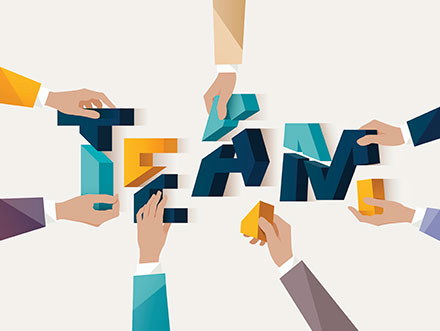What to Look for in a Facilitator
How do you choose someone to effectively lead your brainstorming session?

You have a problem you need to solve and you’ve got a team of experts to solve it but how do you choose the person to pull that information out of disparate voices?
A good facilitator can empower and enhance your team. A bad one can derail the whole session. It’s important to choose the right person. But don’t assume there is only one personality type for the job. Skilled facilitators can be introverted or extroverted. They can be funny or serious. They can be fly-by-the-seat-of-their-pants or buttoned up.
It’s better to look at the processes they employ while facilitating, rather than their persona. Here are some best practices you should look for in a facilitator or use yourself if you’ve been assigned that role.
Assign homework
No one should come into a brainstorming session cold. The problem you are trying to solve should already be established (not that it can’t change through exploration). Give each participant a small nugget of the problem to noodle on as homework. This will ensure everyone comes to the table prepared.
Set the stage
Participants shouldn’t have to rearrange the furniture before a brainstorming session. Make sure the stage is set. Have the furniture set up the way you want. Get beverages or snacks set out. Make sure the technology works. Have all the tools you need at the ready: paper, pens, worksheets, background information, etc.
Be open to varying personalities
To be able to pull information out of different people you have to be open to different personalities. Some people will want to prepare everything upfront. Others will want to think on the fly. Some people won’t speak up without coaxing. Others will spew any and all content out of their brains at all times. It’s a delicate balance to manage but being open and inclusive of all work styles will benefit the team in the long run.
One way to aid this is to include different types of brainstorming activities. Some can be worked on individually, others in small groups, and still others as large groups. Have some that are seated and quiet and others that are active and loud. This way all personality types can be accommodated.
Have an outside perspective
An outside perspective can help in identifying roadblocks in your organization that long-time employees have just gotten used to. Look for a facilitator who can achieve this perspective. Maybe they are from outside your organization. Maybe they are from outside your department. Maybe they are new to your organization. At the very least they should have the autonomy to run the session without too much interference. They need to be able to ask the hard questions without repercussion in order to get past institutional roadblocks.
Withhold judgement, then evaluate
You’ve heard the old adage: There are no bad ideas in brainstorming. And that’s true. Your facilitator needs to encourage any and all ideas to be free-flowing…for a certain period of the session. Then you have to evaluate, build upon, and improve those ideas. You have to have both the open exchange of ideas and the critical evaluation of those ideas to get to the right solution.
Stay on task
Everyone’s time is precious, so getting the task done in the allotted time is essential. A good facilitator knows when to dig deeper into a topic, when to move on, and when to schedule an off-line meeting to deal with any extraneous issues that come up.
Keep a record
You can’t take action if you don’t know what’s been decided in a brainstorming session. A good facilitator will employ someone to help record the essential details of the meeting for future reference.
Follow up with assignments
Finally, tasks must be assigned at the end of the session. Making people accountable will get things done. Additionally, participants will want to know what is to come of their ideas so follow up with reports as the project comes to life.
Use this list as a benchmark when choosing your facilitator. See how they plan to run the meeting and if it matches with your expectations. Soon, you’ll have the meeting of your dreams, not your nightmares.
The Best-Run Meetings
5 tips to make your meetings more effective.
Brainstorming: Team Up or Go It Alone?
The benefits of mixing up your team sizes to get the most out of a brainstorming session.
Kickstart Your Creative Flow
10 steps to get unstuck creatively and let your ideas out into the world.



